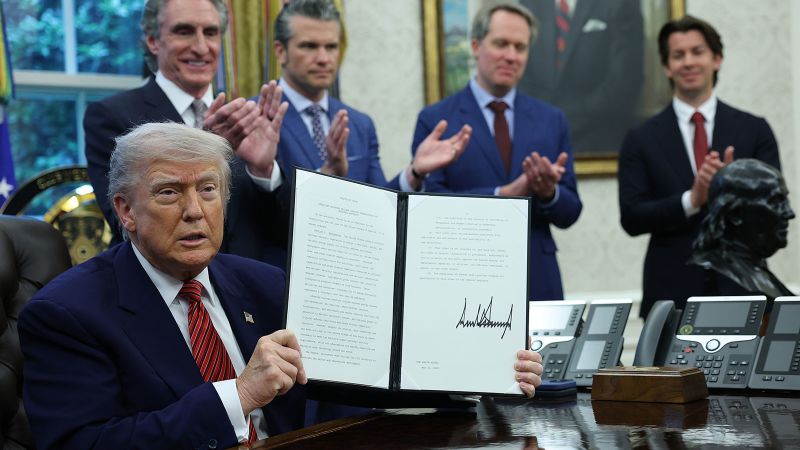On a notable Friday, President Donald Trump took significant steps toward revitalizing the nuclear energy sector by signing four executive orders focused on various facets of nuclear energy development. These executive orders aim to accelerate reactor testing, enable the Departments of Energy and Defense to construct nuclear reactors on federally-owned land, reform the Nuclear Regulatory Commission (NRC), and enhance uranium mining and enrichment within the United States. This ambitious effort was outlined by a senior official from the White House.
One fundamental aspect of these orders includes the restoration of what the administration labels “gold-standard science.” This move comes on the heels of substantial cuts—amounting to billions—in federal grants allocated for scientific research and a reduction in staffing at several research-oriented agencies. During the signing ceremony held in the Oval Office, President Trump exclaimed, “We’re signing tremendous executive orders today that really will make us the real power in this industry, which is a big industry,” underlining the importance he places on boosting the U.S. nuclear energy framework.
However, it is essential to note that these actions are occurring alongside proposals that call for cutting over $400 million from the Energy Department’s Office of Nuclear Energy. This juxtaposition raises questions about the overall motive and practical impact of the executive orders. Interior Secretary Doug Burgum, who was present alongside nuclear energy executives during the signing, criticized previous excessive regulations and lauded the potential of venture capital in moving the industry forward. Burgum highlighted that this commitment to nuclear energy would enable the U.S. to gain a competitive advantage in technological arenas against countries such as China.
Among the specific orders, one particularly focuses on expediting reactor testing at Department of Energy (DOE) national labs, thereby streamlining application processes and setting up expedient reviews. This initiative allows for a pilot program intended for construction within a two-year span. Another order seeks to reduce regulatory hurdles for establishing nuclear reactors on federal land, aiming to create a reliable energy source to power critical defense facilities and advanced AI data operations.
Moreover, Defense Secretary Pete Hegseth pointed to the necessity of small modular nuclear capabilities for enhancing national security. By effectively deploying such technologies within military bases both domestically and internationally, he argued, the military can assure its reliability in various global scenarios. A White House spokesperson indicated that these new reactors would be “small and advanced,” keeping in sync with the contemporary trend toward more compact and efficient energy solutions.
Additionally, President Trump directed the NRC to process nuclear reactor licenses within 18 months by means of a third executive order. This urgency reflects a broader strategy to reinvigorate the U.S. nuclear industrial base, with plans to recommence domestic mining and enrichment of uranium. However, there lies an inherent challenge—a realization that the U.S. could be several years away from reaching full operational capacity in uranium enrichment. Historically, until recent legislative changes following Russia’s invasion of Ukraine, the U.S. relied heavily on Russian-sourced enriched uranium. With proactive measures now being taken, it remains critical for U.S.-based scientists and companies to ramp up domestic production rapidly.
The orders embody specific targets for expanding the U.S. nuclear energy capacity from around 100 gigawatts to an ambitious 400 gigawatts by the year 2050. Trump elaborated that the plan includes facilitating new reactor technologies, such as Generation III+ and IV reactors, modular reactors, and microreactors, by addressing both regulatory and economic barriers.
A notable aspect of this initiative is the anticipated reform of the Nuclear Regulatory Commission to better align with Congress’s expectations of promoting nuclear power’s benefits. The commission has historically been tied to licensing delays, and the newly proposed measures focus on reorganizing it to overcome structural misalignments and expedite licensing timelines. Nevertheless, the specifics about potential staffing changes within the NRC remain uncertain, with indications of possible cuts as part of a reorganization effort.
As the United States grapples with the pressing need for clean energy solutions, Trump’s executive orders signal a strategic pivot towards nuclear energy, characterized by a deliberate effort to encapsulate technological advancements and regulatory reforms. While ambitious in scope, the efficacy and timeline for actualizing these plans remain to be seen as stakeholders in the energy sector begin to navigate this newly depicted landscape.



